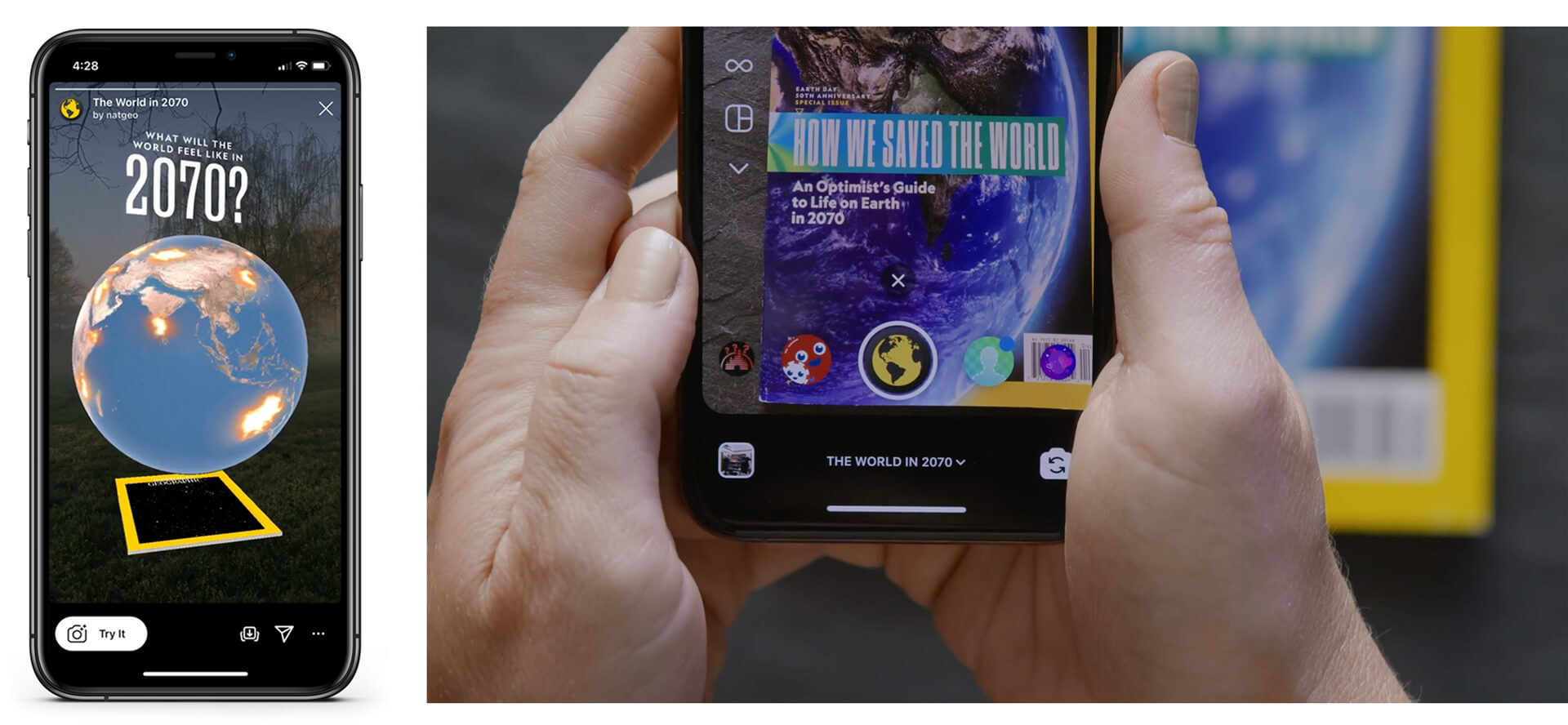National Geographic: Earth Day AR Filter
How Signal Theory and National Geographic predicted Earth’s future.
National Geographic was planning a special double issue for Earth Day 2020. We brought the cover to life through augmented reality and helped shed light on the planet’s climate crisis.
Climate change is a planet-sized problem that could go two ways. One, mankind could ignore the warning signs and allow the disastrous effects to become irreversible. Or two, we do something about it and save the world.
National Geographic’s Earth Day issue was designed to communicate just that, with competing covers that told the story of both outcomes.
The magazine challenged Signal Theory to create an interactive experience that would allow users to observe the effects of climate change for themselves.
The dangers of climate change might not be immediately obvious to someone going about their day-to-day life. And when dangerous outcomes are out of sight, they’re also out of mind and therefore easily ignored. To make people face the realities of climate change, we had to bring the future to the present.
We created a custom AR filter that put the potential consequences of climate change right in human hands.
The filter could be activated by the magazine’s cover and showed an animation of the Earth in the year 2070. Viewers could interact with the globe and see how 50 years of climate change affected 12 major cities.

Thanks to National Geographic’s 143 million followers, the filter was opened, shared, and interacted with across the world .
The Earth Day filter was also picked up by news outlets — and advertising publications — nationwide, praising the way National Geographic used technology to tell this important story.
Examining the Earth from all angles is part of National Geographic’s mission. See how it looks via a trip up Mount Everest – another project from Signal Theory and National Geographic.
Link to the Earth Day AR filter: https://www.instagram.com/ar/238102353981031